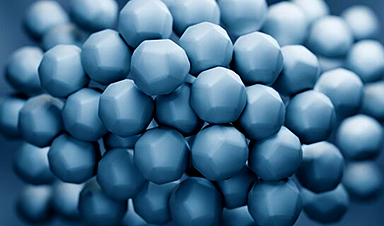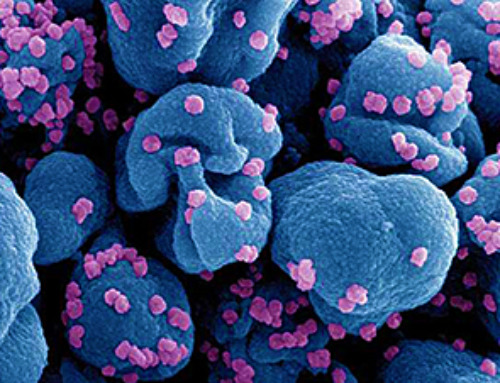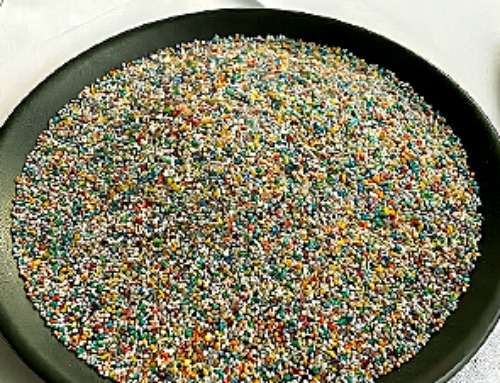Excessive activation of inflammasomes is associated with various diseases, including gout, Alzheimer’s disease, atherosclerosis, and type 2 diabetes. Given the pivotal role of macrophages in both inflammasome activation and nanoparticle phagocytosis, the discovery of anti-inflammatory nanoparticles specifically targeting macrophages could more effectively modulated inflammatory response while minimizing off-target effects in other cell types.
A study published in the journal National Science Review demonstrated that nickel-cobalt alloy nanocrystals exhibit remarkable efficacy in suppressing the activation of three inflammasomes, namely NLRP3, NLRC4, and AIM2, in primary macrophages. Subsequently, the researchers employed two disease models, colitis and acute peritonitis, to evaluate the impact of nickel-cobalt alloy nanocrystals on treating inflammasome overactivation.
The findings revealed that nickel-cobalt alloy nanocrystals effectively ameliorated disease symptoms in mice in the colitis model, including mitigating weight loss, restoring colon length, and alleviating damage to the intestinal mucosal epithelium. Furthermore, in the acute peritonitis model, these nanocrystals significantly attenuated neutrophil chemotaxis within the peritoneal cavity of mice.
To confirm whether nickel-cobalt alloy nanocrystals require cellular internalization to exert their anti-inflammatory effects, the authors performed experiments using a widely used endocytosis inhibitor, cytochalasin D. Treatment with cytochalasin D significantly reduced the internalization of nickel-cobalt alloy nanocrystals by macrophages.
Moreover, inhibiting the internalization of the nanocrystals by macrophages led to a decrease in their anti-inflammatory effects, indicating that the anti-inflammatory action of nickel-cobalt alloy nanocrystals relies on their cellular uptake.
To investigate whether the anti-inflammatory effects of nickel-cobalt alloy nanocrystals are attributed to their geometric morphology or elemental composition, the authors synthesized nickel nanoparticles and cobalt nanoparticles under identical conditions as controls, which exhibited distinct morphologies compared to the nickel-cobalt alloy nanocrystals. However, both nickel nanoparticles and cobalt nanoparticles also significantly inhibited inflammasome activation.
Therefore, the authors attributed the inhibitory effect of nickel-cobalt alloy nanocrystals to the elemental composition rather than their geometric shape. These findings suggest that nanomaterials containing nickel and cobalt may offer opportunities for designing nano-drugs with anti-inflammatory properties.
Revealing the biological mechanisms underlying the action of nanomaterials is crucial for their potential medical applications. However, elucidating the biological mechanism by which these broad-spectrum anti-inflammatory nanocrystals inhibit inflammasome activation poses significant challenges using conventional biological experimental approaches.
To address this, researchers conducted RNA sequencing and the assay for transposase-accessible chromatin with sequencing (ATAC-Seq), leading to the identification of a previously reported non-coding RNA, Neat1, known to be involved in inflammasome assembly. Following treatment with the nickel-cobalt alloy nanocrystals, the expression of Neat1 was significantly reduced.
Previous studies have demonstrated that downregulating Neat1 expression alone significantly inhibits the activation of NLRP3, NLRC4, and AIM2 inflammasomes. ATAC-Seq results revealed a significant reduction in the chromatin accessibility of the gene body and promoter regions of Neat1 in the nickel-cobalt alloy nanocrystal-treated group, suggesting that the inhibition of inflammasome activation by the nickel-cobalt alloy nanocrystals is achieved through the suppression of Neat1 transcription rather than promoting its degradation.
This study was collaboratively conducted by Dr. Shu-Hong Yu, Dr. Long-Ping Wen, and Dr. Kun Qu from the University of Science and Technology of China, together with Professor Yang Lu from Hefei University of Technology.
News
Platelet-inspired nanoparticles could improve treatment of inflammatory diseases
Scientists have developed platelet-inspired nanoparticles that deliver anti-inflammatory drugs directly to brain-computer interface implants, doubling their effectiveness. Scientists have found a way to improve the performance of brain-computer interface (BCI) electrodes by delivering anti-inflammatory drugs directly [...]
After 150 years, a new chapter in cancer therapy is finally beginning
For decades, researchers have been looking for ways to destroy cancer cells in a targeted manner without further weakening the body. But for many patients whose immune system is severely impaired by chemotherapy or radiation, [...]
Older chemical libraries show promise for fighting resistant strains of COVID-19 virus
SARS‑CoV‑2, the virus that causes COVID-19, continues to mutate, with some newer strains becoming less responsive to current antiviral treatments like Paxlovid. Now, University of California San Diego scientists and an international team of [...]
Lower doses of immunotherapy for skin cancer give better results, study suggests
According to a new study, lower doses of approved immunotherapy for malignant melanoma can give better results against tumors, while reducing side effects. This is reported by researchers at Karolinska Institutet in the Journal of the National [...]
Researchers highlight five pathways through which microplastics can harm the brain
Microplastics could be fueling neurodegenerative diseases like Alzheimer's and Parkinson's, with a new study highlighting five ways microplastics can trigger inflammation and damage in the brain. More than 57 million people live with dementia, [...]
Tiny Metal Nanodots Obliterate Cancer Cells While Largely Sparing Healthy Tissue
Scientists have developed tiny metal-oxide particles that push cancer cells past their stress limits while sparing healthy tissue. An international team led by RMIT University has developed tiny particles called nanodots, crafted from a metallic compound, [...]
Gold Nanoclusters Could Supercharge Quantum Computers
Researchers found that gold “super atoms” can behave like the atoms in top-tier quantum systems—only far easier to scale. These tiny clusters can be customized at the molecular level, offering a powerful, tunable foundation [...]
A single shot of HPV vaccine may be enough to fight cervical cancer, study finds
WASHINGTON -- A single HPV vaccination appears just as effective as two doses at preventing the viral infection that causes cervical cancer, researchers reported Wednesday. HPV, or human papillomavirus, is very common and spread [...]
New technique overcomes technological barrier in 3D brain imaging
Scientists at the Swiss Light Source SLS have succeeded in mapping a piece of brain tissue in 3D at unprecedented resolution using X-rays, non-destructively. The breakthrough overcomes a long-standing technological barrier that had limited [...]
Scientists Uncover Hidden Blood Pattern in Long COVID
Researchers found persistent microclot and NET structures in Long COVID blood that may explain long-lasting symptoms. Researchers examining Long COVID have identified a structural connection between circulating microclots and neutrophil extracellular traps (NETs). The [...]
This Cellular Trick Helps Cancer Spread, but Could Also Stop It
Groups of normal cbiells can sense far into their surroundings, helping explain cancer cell migration. Understanding this ability could lead to new ways to limit tumor spread. The tale of the princess and the [...]
New mRNA therapy targets drug-resistant pneumonia
Bacteria that multiply on surfaces are a major headache in health care when they gain a foothold on, for example, implants or in catheters. Researchers at Chalmers University of Technology in Sweden have found [...]
Current Heart Health Guidelines Are Failing To Catch a Deadly Genetic Killer
New research reveals that standard screening misses most people with a common inherited cholesterol disorder. A Mayo Clinic study reports that current genetic screening guidelines overlook most people who have familial hypercholesterolemia, an inherited disorder that [...]
Scientists Identify the Evolutionary “Purpose” of Consciousness
Summary: Researchers at Ruhr University Bochum explore why consciousness evolved and why different species developed it in distinct ways. By comparing humans with birds, they show that complex awareness may arise through different neural architectures yet [...]
Novel mRNA therapy curbs antibiotic-resistant infections in preclinical lung models
Researchers at the Icahn School of Medicine at Mount Sinai and collaborators have reported early success with a novel mRNA-based therapy designed to combat antibiotic-resistant bacteria. The findings, published in Nature Biotechnology, show that in [...]
New skin-permeable polymer delivers insulin without needles
A breakthrough zwitterionic polymer slips through the skin’s toughest barriers, carrying insulin deep into tissue and normalizing blood sugar, offering patients a painless alternative to daily injections. A recent study published in the journal Nature examines [...]





















